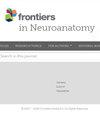Geometric morphometric analysis of the brainstem and cerebellum in Chiari I malformation
IF 2.3
4区 医学
Q1 ANATOMY & MORPHOLOGY
引用次数: 0
Abstract
BackgroundChiari I malformation (CMI) is characterized by inferior descent of the cerebellar tonsils through the foramen magnum and is associated with headache and neck pain. Many morphometric research efforts have aimed to describe CMI anatomy in the midsagittal plane using classical measurement techniques such as linear dimensions and angles. These methods are less frequently applied to parasagittal features and may fall short in quantifying more intricate anatomy with fewer distinct homologous landmarks.MethodsLandmark-based geometric morphometric techniques were used to asses CMI morphology in five anatomical planes of interest.ResultsSignificant shape differences between CMI and age/sex-matched controls were found in the midsagittal (Pseudo-Chiari I畸形患者脑干和小脑的几何形态分析
背景卡氏Ⅰ型畸形(CMI)的特征是小脑扁桃体通过枕骨大孔向下下降,与头痛和颈痛有关。许多形态计量学研究旨在使用线性尺寸和角度等经典测量技术来描述 CMI 在中矢状面的解剖结构。这些方法较少应用于副矢状面特征,而且可能无法量化同源地标较少的复杂解剖结构。结果在中矢状面(Pseudo-F = 5.4841,p = 0.001)和通过喙髓的轴向平面(Pseudo-F = 7.6319,p = 0.001)发现,CMI 与年龄/性别匹配的对照组在形态上存在显著差异。除扁桃体下降外,中矢状面方案中的 CMI 主成分 1(PC1)得分还与脑干明显前凹和小脑普遍垂直以及小脑前叶前旋有关。讨论 这些结果表明,CMI 与脑干和脊髓的较大弯曲有关,这可能会干扰正常的神经活动并破坏脑脊液运动。以前关于 CMI 患者后窝 A-P 直径的报道相互矛盾;我们的研究结果表明,小脑 A-P 尺寸增大的同时,宽度也随之减小,这说明颅骨后窝的尾部可能更像碗状(轴向尺寸均匀),而在 M-L 方向上则不像槽状或拉长。
本文章由计算机程序翻译,如有差异,请以英文原文为准。
求助全文
约1分钟内获得全文
求助全文
来源期刊

Frontiers in Neuroanatomy
ANATOMY & MORPHOLOGY-NEUROSCIENCES
CiteScore
4.70
自引率
3.40%
发文量
122
审稿时长
>12 weeks
期刊介绍:
Frontiers in Neuroanatomy publishes rigorously peer-reviewed research revealing important aspects of the anatomical organization of all nervous systems across all species. Specialty Chief Editor Javier DeFelipe at the Cajal Institute (CSIC) is supported by an outstanding Editorial Board of international experts. This multidisciplinary open-access journal is at the forefront of disseminating and communicating scientific knowledge and impactful discoveries to researchers, academics, clinicians and the public worldwide.
 求助内容:
求助内容: 应助结果提醒方式:
应助结果提醒方式:


